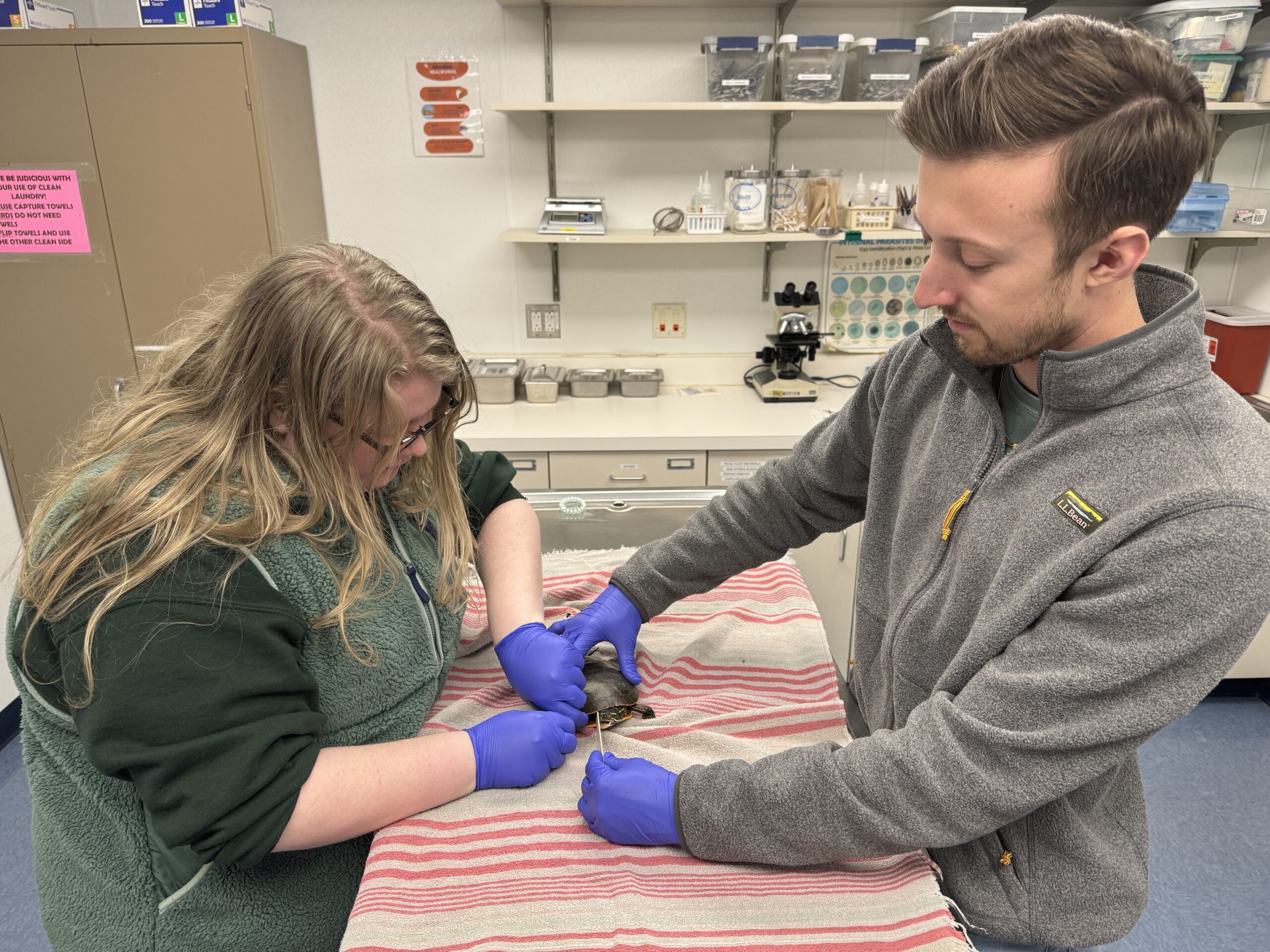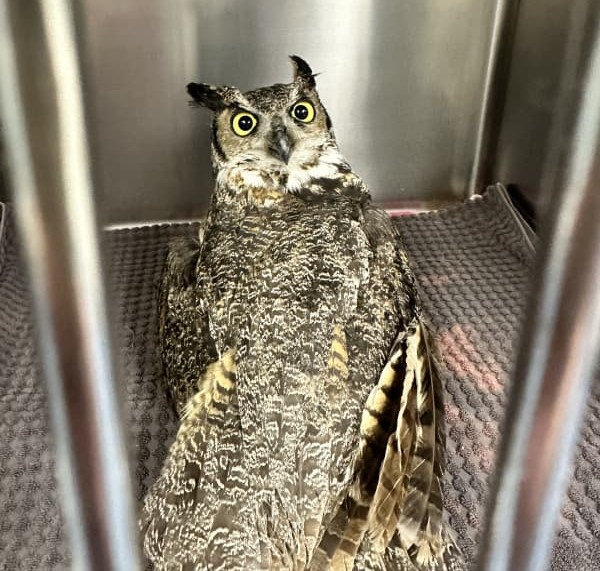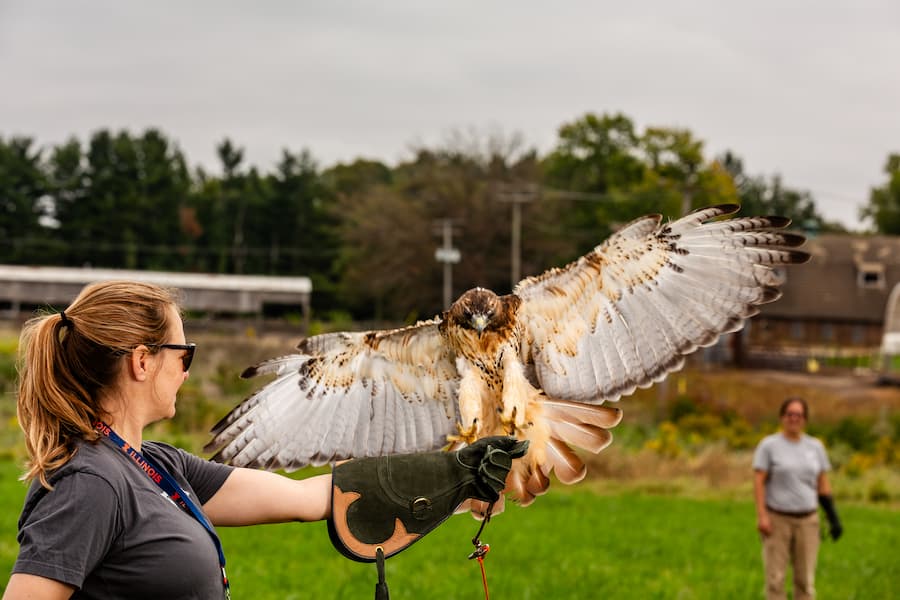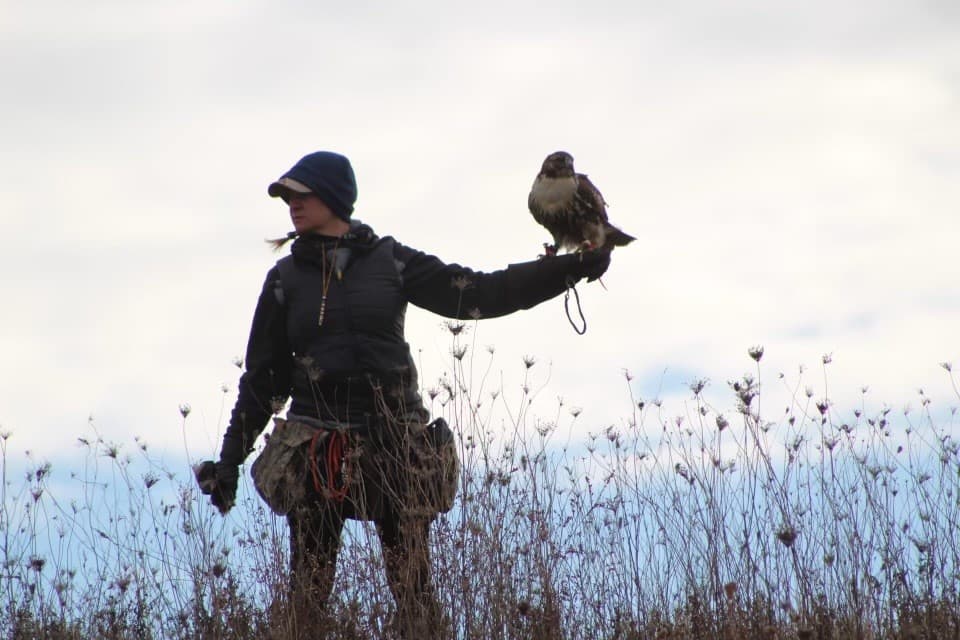At the end of August, an adult male Midland Painted Turtle presented to the Wildlife Medical Clinic from a rehabilitator after it was suspected to have been hit by a car. This patient had a fairly severe fracture of his carapace (top of shell) and required extensive treatment to repair it. While receiving these treatments, the turtle developed neuropathy (nerve damage) in his right front leg. This problem caused him to incorrectly place his foot when walking. To correct the placement, we started him on a routine of PROM, laser therapy, and physical therapy three times a week.
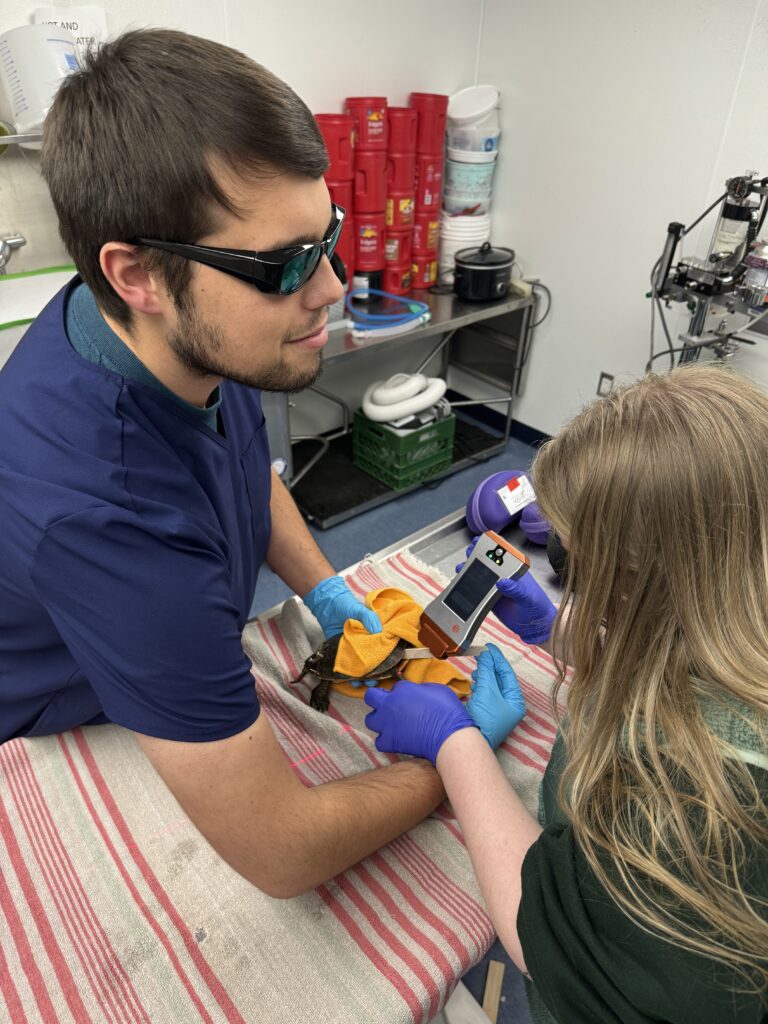
PROM stands for passive range of motion and is performed by slowly and repetitively stretching the joint. The goal of PROM is to increase the stretch and movement of the structures that surround the joint. For this specific patient, PROM consists of extending the carpus (wrist) & phalanges (fingers) as far as possible, three times for thirty second intervals.
We are using laser therapy to increase healing and blood flow to the limb as well as to decrease pain, inflammation, and swelling. This patient’s front leg has been inconsistently swollen since the nerve damage took place. With the laser therapy, our goal is to decrease the swelling and promote faster healing. We perform the lasering from the top of the radius/ulna (area between elbow and wrist of front leg) to the tips of the phalanges (fingers) to achieve this goal.
The final part of this patient’s therapy plan is physical therapy. When developing a physical therapy plan, it is important to focus on a specific area while building up strength and correcting incorrect habits that have developed. We complete this through repetitive exercises. Our turtle’s physical therapy plan involves walking up a ramp six to seven times per session, while a volunteer places their fingers behind his limbs to help him properly place his foot on the ramp.
Overall, therapy in reptiles is like other animal species and is tailored to the patient’s specific needs. This patient has been showing great improvement with this therapy plan and we plan to continue until the spring weather reaches Illinois, which is when he will be able to be released back into the wild.
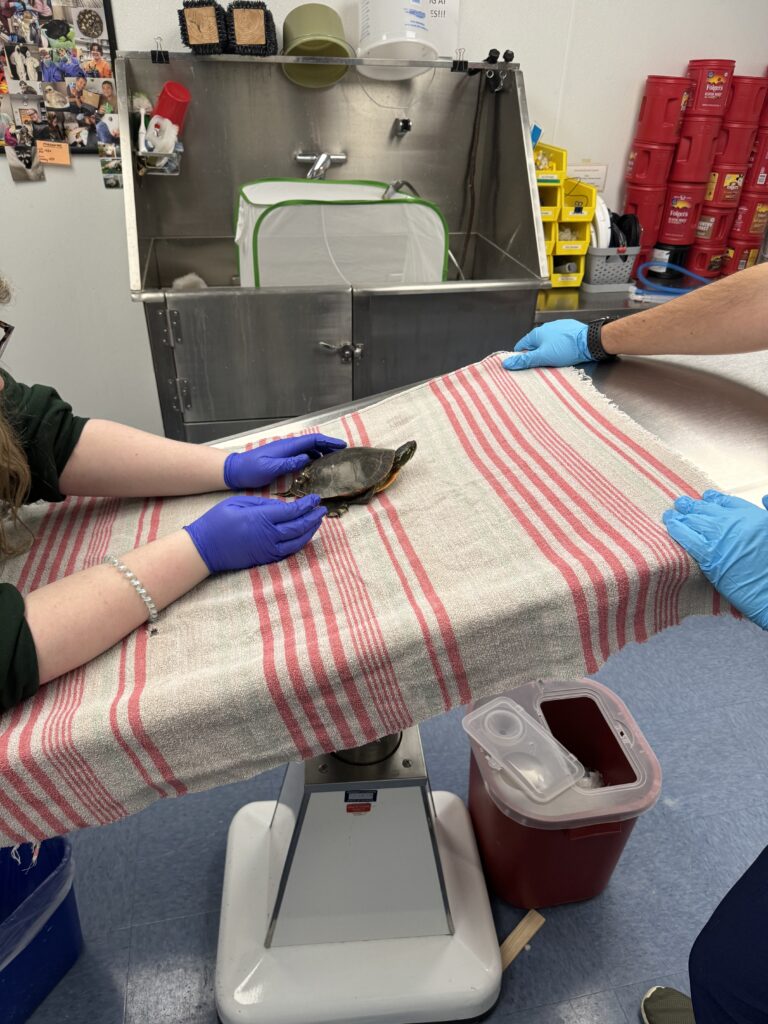
This article was written by 2nd year veterinary student Becky.

